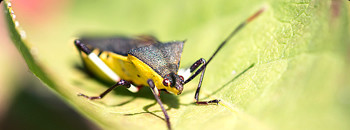Cathie Lavis is a professor of horticulture at Kansas State University. Her expertise includes landscaping, arboriculture, irrigation, and landscape contracting. She provides insight for homeowners and gardeners on plant care, selection, and more.
Watering seems straightforward and easy; however, many plants die as a result of either over or under watering. Watering properly is really both an art and a science. You need to understand the plant, the soil, your local weather conditions and the method used to apply the water.
Larger plants typically use more water because their root systems are better established. These root systems typically require deep watering every 5 to 7 days depending on weather conditions. Seedlings, who don’t have a good root system established yet, require more frequent watering, applied slowly with a soft spray to prevent damage or washing of seeds.
Different plants have different water requirements, so always keep that in mind as you group plants in your landscape or garden. For example, do not place drought tolerant plants close to those that require more frequent watering. As a general rule for most plants, water to a depth of 6 inches, then let the soil surface dry out to 2-3 inches.
Hot, dry and windy conditions cause plants to use more water and these conditions will influence how fast the soil dries out. Remember, mulching to a depth of 3- to 4-inches really helps conserve water loss through soil evaporation.
Many people have heard you should water your lawn 1 to 2 inches weekly. If you want to follow this rule, you need to determine how long to run an in ground watering system or hose sprinkler to achieve this depth. Set out some type of measuring device like empty tuna cans or uniform plastic containers, spaced evenly in the watering area. Turn on the sprinklers and when the desired amount of water is reached you will know how long to run them in the future. Alternatively, you can hire a certified irrigation auditor to perform an audit on your system to determine proper runtimes.

